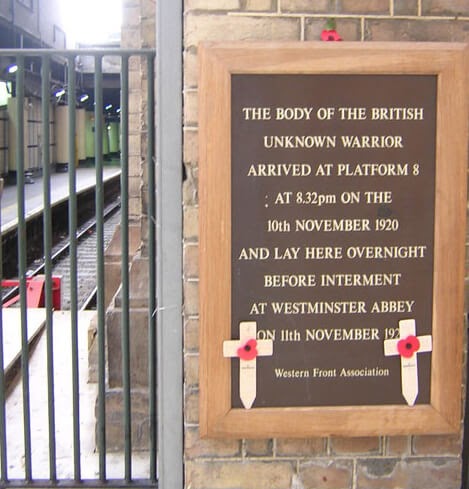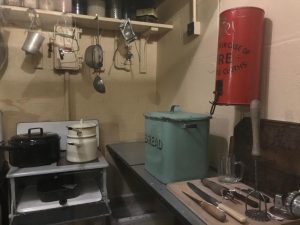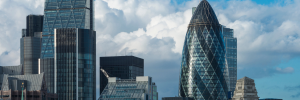When visiting Westminster Abbey or watching one of the filmed ceremonies you may notice a black marble stone (7x 4 ft) set in the floor which everyone walks around, including the monarch. That is the grave of the Unknown Warrior, a symbol of all the glorious dead from World War I (1914-1918).
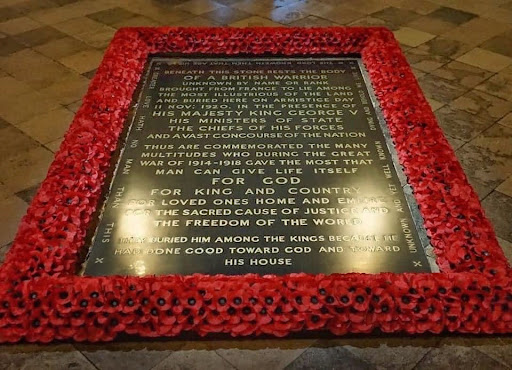
How did this soldier end up amongst the kings in Westminster Abbey?
In 1916 a young military chaplain by the name of David Railton had been conducting burial services for fallen soldiers in France. He saw a solitary grave in a back garden. Pencilled on a rough white cross: ‘An unknown British soldier of the Black Watch.’
In World War I, the total military dead for the British Empire was over 1.1 million, including missing and prisoners.
The grave of the Unknown Warrior was symbolic of all the dead, missing and of World War I (1914-1918), the soldier was buried in a solemn and profoundly moving ceremony two years to the day after the signing of the Armistice that ended the war with Germany.
This image must have stayed with Railton, for in August 1920 he wrote to the Dean of Westminster to ask whether an unknown ‘comrade’ would be allowed to be buried in Westminster Abbey. The Dean wrote to the King and Prime Minister supporting this idea but substituting ‘warrior’ for ‘comrade’. The King was reluctant, concerned with reopening a very recent ‘war wound’ but the Prime Minister and senior military were open to the idea.
The bodies of four unidentified British soldiers were brought to St. Pol-sur-Ternoise, in Northern France, one from each of the main French battlefields: Ypres, the Somme, Arras and Aisne. Each exhumed body was laid on a stretcher and covered with the Union Flag in a chapel.
At midnight on 8 November 1920 commanding officer Brigadier-General Louis John Wyatt and a senior member of the Imperial War Graves Commission, entered the chapel. With their eyes closed they selected a body which was to become known as the Unknown Warrior.
The next day, under ceremonial military escort, the unknown warrior began his journey to his final resting place. In Boulogne the warrior was transferred into a specially made casket. It was made in England from an oak tree from the garden at Hampton Court Palace. It was banded with iron with iron hooped handles.
HMS Verdun, the British destroyer, took the unknown warrior from Boulogne. Six destroyers of the Royal Navy Atlantic Fleet provided an honorary naval escort. A 19-gun salute was fired from Dover Castle when they arrived at Admiral Pier, Dover. HMS Verdun’s bell was presented to the Abbey and now hangs on a wall near to the grave of the unknown warrior.
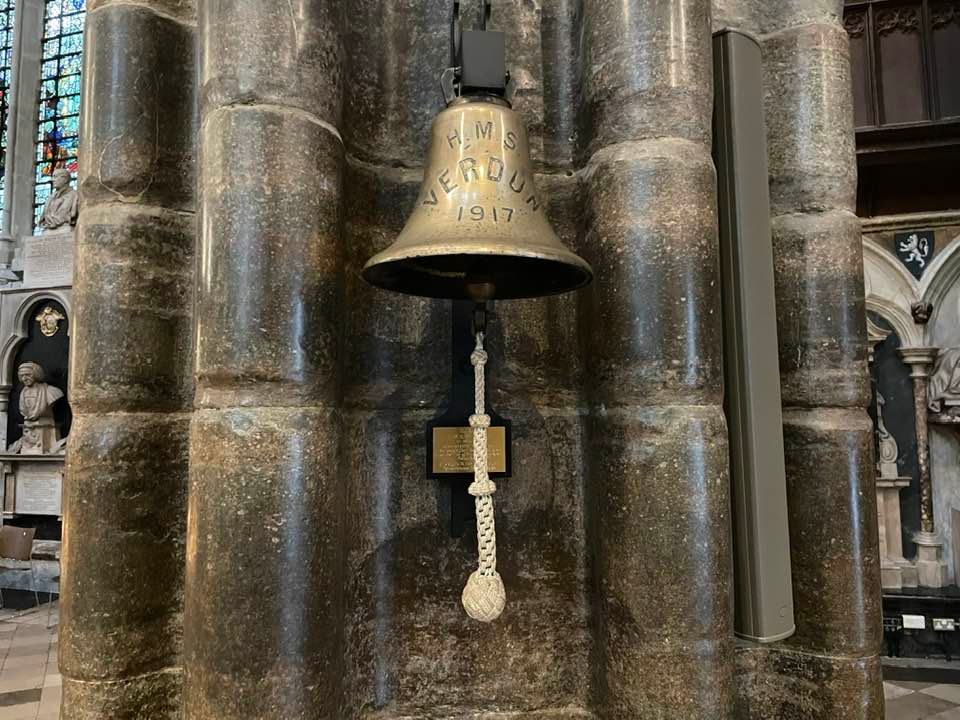
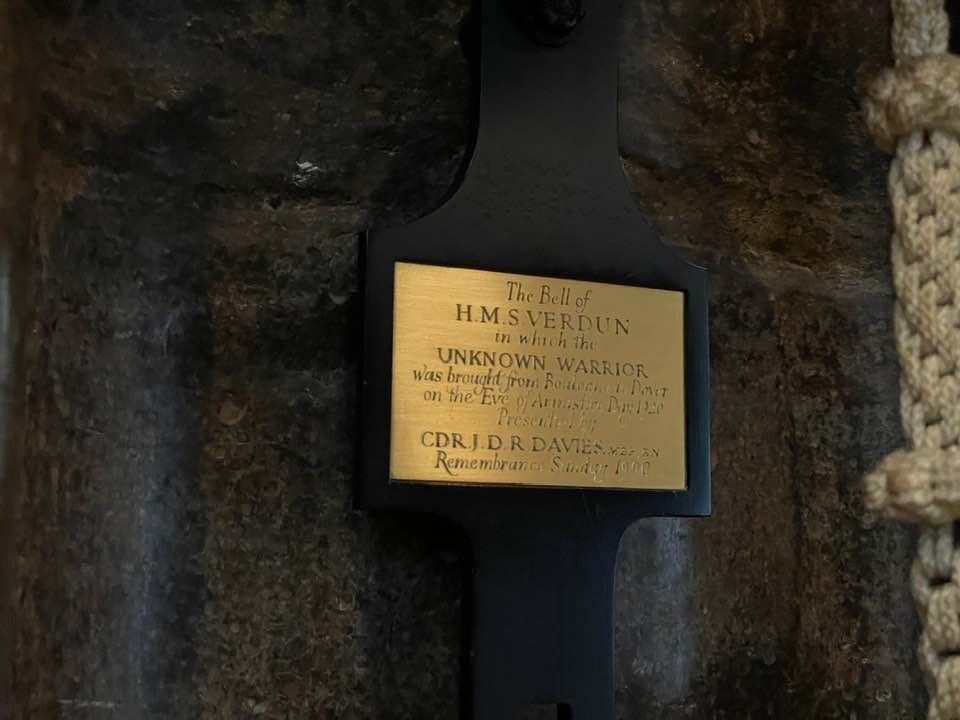
The journey continued but this time via train, reaching Victoria station at 8.32pm. The unknown warrior stayed in the funeral carriage overnight. The next day, a gun carriage, drawn by six black horses of the Royal Horse Artillery, made the short journey from Victoria station, under the Admiralty Arch, down Whitehall to Westminster Abbey. After he was lowered into the grave, the King scattered earth from the First World War battlefields of France onto the coffin with a silver shell. The rest of the grave was filled in with sandbags and sealed with a temporary stone. The gravestone you can see today has an inscription where the brass letters were made from melted down ammunition from WWI. The soldier was buried in a solemn and profoundly moving ceremony two years to the day after the signing of the Armistice that ended the war with Germany.
Watch the final journey of the unknown warrior:
A New Tradition
The Duke of York (later King George VI) married Lady Elizabeth Bowes Lyon in Westminster Abbey in 1923. As the bride was leaving she laid her wedding bouquet on the grave of the unknown warrior as a mark of respect. She had lost a brother during the war. All royal brides married in Westminster Abbey since have sent back their bouquets to be laid on the grave.
Hear about the funeral director who assisted getting the unidentified British soldier to his final resting place in our Episode 73: Great Ormond Street Hospital.
